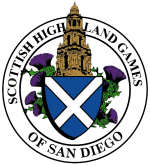Clan Bruce was one of the richest and most powerful clans in the 12th-14th centuries. It was a Royal House in the 14th century and produced two kings of Scotland.
Clan history
Bruce is one of the most famous of all Scottish clans. It produced two kings of Scotland, one of whom, Robert the Bruce, led the army that defeated the English at the Battle of Bannockburn – an event of huge significance in Scottish history.
Clan Bruce descends from Robert de Brus, 1st Lord of Annandale, who came to England in 1106 from Normandy, France. He was a companion-in-arms of Prince David, who he followed north in 1124 to help reclaim his kingdom. Their mission was successful, and David won the throne, ruling as King of the Scots from 1124–1153.
The Bruces moved even closer to becoming royalty in 1219 when Robert Bruce, 4th Lord of Annandale, married Isobel of Huntingdon, daughter of Prince David of Scotland, 8th Earl of Huntingdon (the grandson of King David I). The union made the Bruce family hugely wealthy thanks to lands in both England and Scotland. Their son, Robert Bruce, 5th Lord of Annandale, was a claimant to the crown and was known as ‘the competitor’. After three generations spent circling the throne, the 5th Lord’s grandson, Robert the Bruce, would become King of Scots.
The death of King Alexander III in 1286 started a real-life game of thrones in Scotland. All his children had predeceased him, and when his 7-year-old granddaughter died in 1290 travelling from Norway to Scotland to claim her throne, the Bruce and Balliol families both staked their claims to the crown. The ‘Guardians of Scotland’ were established to look after the country and, to prevent an all-out civil war, they asked Edward I of England to arbitrate among the claimants. But Edward I saw this as his long-desired opportunity to conquer Scotland.
In 1292 Edward chose Balliol who at first swore allegiance to the English monarch. But Balliol soon rebelled against Edward, leading to his defeat and forced abdication after the Battle of Dunbar in 1296. Robert the Bruce then swore allegiance to Edward at Berwick-upon-Tweed but he too breached this oath when he joined the Scottish revolt the following year.
The turning point came in 1306 when Bruce met with John Comyn (another rival for the throne) at Greyfriars Church in Dumfries; neutral ground. Bruce stabbed Comyn through the heart, committing sacrilege and invoking instant excommunication by the church. He then openly rebelled against Edward and his supporters and crowned himself King of Scots at Scone on 25 March.
Robert led the Scottish army at the Battle of Bannockburn in 1314 that famously defeated an English army three times its size. He died in 1329, having fought successfully during his reign to establish Scotland’s right to be an independent country. Today he is revered in Scotland as a national hero.
Bruce’s wish was for his heart to be buried in the Holy Land, but his friend James Douglas died trying to take it there. Bruce’s body was buried in Dunfermline and eventually his heart came back to Melrose.
Bruce’s descendants include all later Scottish monarchs and all British monarchs since the Union of the Crowns in 1603.
There have been several notable members of the Bruce family in more recent centuries. Thomas Bruce (1766-1841), the seventh Earl of Elgin, was a diplomat who spent much of his own private fortune acquiring the 2,400-year-old marble statues of the Parthenon, many of which were decaying beyond repair. They are today known as the ‘Elgin Marbles’ and reside in the British Museum.
Sir William Bruce (c. 1630-1710) was the influential architect who introduced the Palladian style into Scotland. He remodelled the Royal Palace of Holyroodhouse, Thirlestane Castle and Hopetoun House, among many others.
(source: visitscotland.com)
